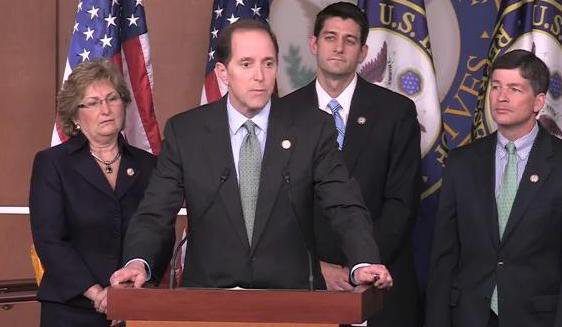Income Tax
10 Key Points to Know About Tax Reform Proposal in Congress
Tax reform is back in on the table. On February 26, 2014, U.S. Representative Dave Camp (Rep.-Mich.), the chairman of the House Ways & Means Committee, released a much-anticipated draft of a major tax overhaul. Camp’s proposed reforms, which were three years in the making, reflect bipartisan efforts to simplify the tax code and provide equality to taxpayers.
Feb. 27, 2014

Tax reform is back in on the table. On February 26, 2014, U.S. Representative Dave Camp (Rep.-Mich.), the chairman of the House Ways & Means Committee, released a much-anticipated draft of a major tax overhaul. Camp’s proposed reforms, which were three years in the making, reflect bipartisan efforts to simplify the tax code and provide equality to taxpayers.
“This legislation does not reflect ideas solely advanced by Democrats or ideas solely advanced by Republicans, nor is it limited to the halls of Congress,” said Camp. “Instead, this is a comprehensive plan that reflects input and ideas championed by Congress, the Administration and, most importantly, the American people.”
Although virtually no one expects the measure to sail through Congress unimpeded, it could provide a foundation for potential reform. Here are ten of the main pillars in the plan.
- The current seven-bracket tax rate structure for individuals would be compressed into just two brackets of 10 and 25 percent.
- The top corporate tax rate of 35 percent would be gradually reduced to 25 percent. This reduction would be phased in over five years: a top rate of 33 percent in 2015, 31 percent in 2016, 29 percent in 2017, 27 percent in 2018, and 25 percent in 2019 and thereafter.
- The standard deduction would be increased to $11,000 for single filers and $22,000 for joint filers (subject to future indexing). For 2014, the standard deduction is only $6,200 for single filers and $12,400 for joint filers.
- The child tax credit, which is $1,000 per child in 2014, would be increased to $1,500 per child, with indexing in the future. The proposed legislation also expands the number of families eligible to claim the credit.
- Long-term capital gains and dividends would be taxed at ordinary income rates, but 40 percent of the income would be exempt from tax. Currently, the maximum tax rate for long-term capital gains and dividends is 15 percent; 20 percent for some upper-income taxpayers.
- The alternative minimum tax (AMT) would be repealed for individuals, 6pass-through entities and corporations. Recent tax law revisions have reduced the impact of the AMT only slightly.
- The deduction for charitable donations would be enhanced by allowing write-offs for contributions made after end of the tax year, permanently extending benefits for charitable easements and establishing a floor instead of a cap for the maximum deductible amount.
- The confusing mix of higher education tax benefits – including two tax credits and a tuition deduction – would be consolidated into a reformed American Opportunity Tax Credit. The maximum credit would be $2,500.
- The research credit for businesses, which has been extended several times in the past and is currently expired, would be enhanced and extended permanently.
- A simplified tax return would be created for individuals over age 65 who receive retirement income from sources like Social Security, annuities, interest, dividends and capital gains.
Camp’s tax reform package would allow 95 percent of filers to benefit from the lowest tax rate of ten percent without having to itemize deductions or track receipts. It would also wipe out more than 220 sections of the tax code.
Not surprisingly, reaction to the plan on Capitol Hill to the draft was decidedly mixed. The upshot: There’s a long way to go before any significant tax reform becomes a reality.
